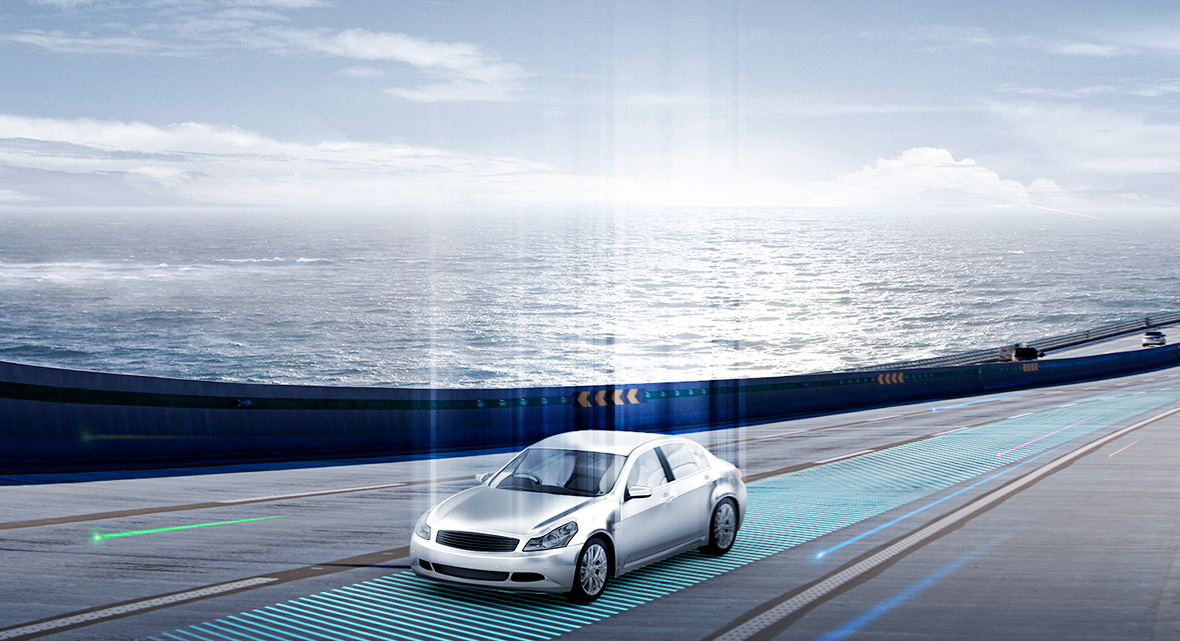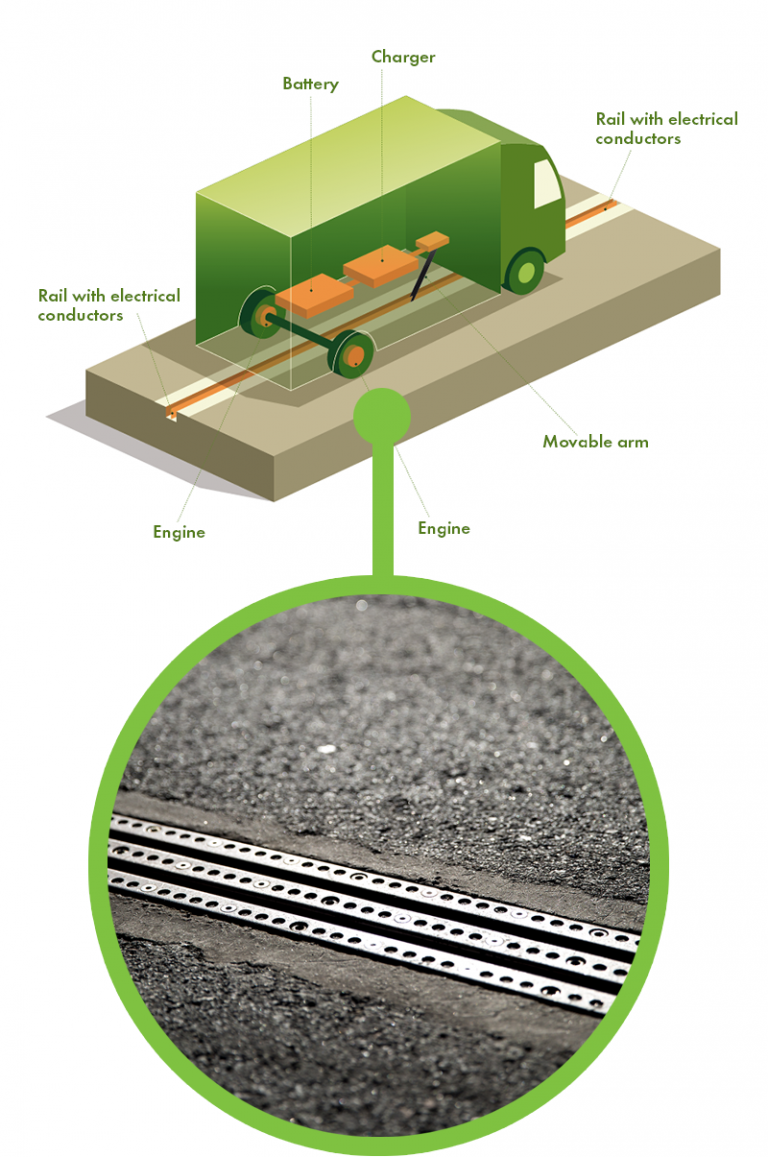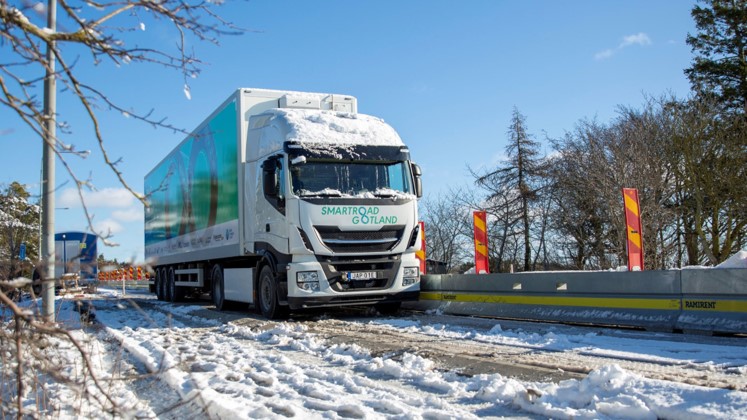2025.01.17
 Trends & Reports
Trends & Reports
As governments are enforcing regulations to cut the greenhouse gas emissions, electric vehicles (EVs) are rapidly increasing and believed to be the best option so far to replace the traditional ICE (internal combustion engine) ones. In the near future, low emission vehicles will no longer an option but a duty that both suppliers (automakers) and demanders (customers) must take, so in the EV market, a new race has started: finding solutions that are not only eco-friendly, but also able to run farther with less charging time.
This is the bandwagon on which manufactures that produce EV batteries and energy companies would like to jump. Battery makers are developing cells with higher and higher capacity, while energy companies are adding more EV charging stations besides (or even in replace of) existing gas stations. However, for vehicles that have really big sizes and need much longer driving range such as electric trucks, aside from high capacity batteries and easy-to-find charging stations, being able to recharge even when they are moving is a solution that they may need. Therefore, an electrified road (or electric road, E-road, EV-charging road, etc.) seems to be the exact thing that EV trucks need.
However, how far are we on the developing process of such roads, and where can we find them, are they the future “way” that will replace the current asphalt and concrete roads? We may not be able to give the correct answers or predictions at the moment, but let us take a look at the technologies and see some pros and cons that an e-road can have.
ㅣ eRoadArlanda, an electrified road that applies conductive technology “from below”
In 2018, the world’s first electrified highway that can charge EVs was launched in Sweden, marking an important milestone of the e-road development. Even though the length of the electric pavement is only about 1.2 miles (2km), it lighted the hope of a future where cars can be re-charged while running without worrying about the time to run around just to find an EV charging station or have to stop for a while to be charged.
This e-road is called “eRoadArlanda” and it is the result of a collaboration between the famous German multinational conglomerate Siemens and Scania, a Swedish company focusing on lorries, trucks and buses. eRoadArlanda uses a pair of electric rails to transfer energy (electricity) from the rail, which is connected to the power grid, to an EV that is running above it via a movable arm. When the vehicle stops or does not run on the electrified rails, the pantograph is disconnected and now it will go back to be powered by the charged battery cells inside.

Source: eRoadArlanda’s homepage (eroadarlanda.com)
Many call such way of charging while driving “dynamic charging”, which is in contrasted to the existing charging method that requires the driver to stop the vehicle for a while and plug in a fixed power source.
▲ Guardian News: How world’s first electrified road charges moving vehicles
Those who know how a trolleybus in the 19th century runs may have found the resemblance. Back in 1882, Dr. Ernst Werner Siemens (yes, he is the founder of Siemens AG) demonstrated his “Elektromote” in a Berlin suburb, showing the world how a vehicle can run while being empowered through the two overhead wires connected to two trolley poles.

▲ Stylized postcard image of the Siemens Elektromote, the world’s first trackless trolley
On the official homepage of eRoadArlanda, the technology is simply explained as below:
“There are several methods of building electrified roads.
Inductive technology involves a magnetic transmission of energy.
Conductive technology allows for electricity to be supplied in two ways:
contact from above through overhead lines or from below via conductors in the road.
eRoadArlanda has chosen to test and develop conductive feeds from below,
the method that we have deemed will have the greatest potential to succeed.”
In a report about the eRoadArlanda, The Guardian shared that “At a cost of €1m per kilometer, the cost of electrification is said to be 50 times lower than that required to construct an urban tram line.” It also quoted Hans Säll, chief executive of the eRoadArlanda consortium: ““There is no electricity on the surface. There are two tracks, just like an outlet in the wall. Five or six centimeters down is where the electricity is. But if you flood the road with salt water then we have found that the electricity level at the surface is just one volt. You could walk on it barefoot.”
ㅣ Some other countries are joining the run for electrified roads
Through an article published on January 21st on its homepage, Vattenfall, the largest producers and retailers of electricity and heat in Europe stated that “Sweden and Germany are leading the development for electric roads” by listing a few e-road projects in which the company is participating. Some of the projects mentioned use overhead line, such as the 60km motorway stretch near Frankfurt Am Main, while some others like the Smartroad Gotland project use “big electric coils in the roadway to transfer the power wirelessly to the vehicle.” Vattenfall explained the technology in the Smartroad Gotland project: “1.5 meter-long copper coils were installed under the asphalt on a public road between the airport and the city center,” and “the electric power is transmitted via so-called induction.”

▲ The Smartroad Gotland project in Sweden (Source: Vattenfall)
According to a report released by The Wall Street Journal on January 18th, “Several automotive, utility and infrastructure companies are testing technology that promises to allow electric cars, buses and trucks to charge on the move.” The report mentioned the case in France, where Renault – famous French automaker, worked with the Electricite de France SA to test dynamic charging on some Paris streets.
In South Korea, a recent report released by the Korean Intellectual Property Office (KIPO) showed that from 2010 to end of 2019 there are 299 patent applications related to wireless charging while driving an EV. The representative from KIPO share that most of them are technologies that enhance wireless charging performance, and it seems the increased charging performance can promote commercialization by lowering facility installation costs.
In 2009, the Korea Advanced Institute of Science and Technology (KAIST) introduce OLEV (online electric vehicle), a type of EV that uses wireless dynamic charging through inductive coils embedded in the road. In 2010, KAIST’s Road-Embedded Rechargers was selected as Time’s The 50 Best Inventions of 2010. KAIST launched a OLEV bus line in Gumi city in 2013, and another one in Sejong in 2015. Two more OLEV bus lines were added in Gumi in 2016. A new OLEV bus line is also expected to start running this month in Daejeon.
▲ OLEV (On-Line Electric Vehicle) – Introduction (KAIST)
“The wireless charging road is expected to expand to not only EVs but also charging means for various mobility such as unmanned delivery drones,” said Choo Hyeong-seok, an examiner in the Electricity Examination Division at the KOPI.
Japan, China, and the U.S. are also known to have tested electric road systems a few years ago.
ㅣ Yet still a bumpy road
EV batteries are getting better in all aspects, including the capacity, but still, large vehicle needs large battery and longer charging time so dynamic charging is what truck and bus drivers would totally love. On its website, eRoadArlanda even shows a list of the pros it can bring. Various companies have tested their e-road technologies, and policy makers/governments seem to be optimistic about the ideas as well.
Nevertheless, the length of current electrified roads are still short and the number of actual EVs that are using this type of dynamic charging is still very few. Some big factors are impeding the commercialization of e-roads, and they are not what can be solved right away.
Not long after eRoadArlanda was launched, an article on Futurism pointed out a few cons of an e-road, and the first problem is the cost of construction and maintenance. The article quoted Don MacKenzie, a researcher at the Sustainable Transportation Laboratory at the University of Washington: “We seem to have a hard enough time keeping our basic asphalt and concrete roads in a state of good repair, let alone roads with embedded hardware and associated controls.” This is what Don told NBC when he talked about another EV-charging road system.
Don’s opinion about the cost is also similar to what some others concern. After talking about various companies and projects that are testing the technologies, The Wall Street Journal also specified the problem of the cost: “Skania estimates that it will cost $2.5 million to supply electricity to a kilometer of highway. Electron calculates the cost at $650,000 per kilometer, but the figure does not include the cost of connecting the grid.” The article continued by sharing the words of Alex Gruzen, chief executive officer of WiTricity – an American wireless charging technology company: “Dynamic charging, which should be accompanied by a drop in battery prices, is not that economically persuasive.”
Back to the Futurism’s article, it identified the second reason that may make e-roads not that necessary is “The average person doesn’t need EV-charging roads.” The article explained EV batteries for “average” cars (not the heavy trucks) have enough capacity and “at-home chargers become more common”, so “the chance that you’ll need to charge your EV’s battery [suddenly] will be an extreme case.”
That was what Futurism viewed in 2018, and now 3 years later, CNBC shared its interview with the American automotive retailer AutoNation CEO Mike Jackson proving “range anxiety” is no longer much of a problem for most EV owners. Jackson said, “Range anxiety is dramatically disappearing because American ingenuity — they figured out how they live, how they’re going to use it, and it’s not an issue.”
All in all, the feasibility of electrified roads were proved, and its eco-friendly aspect is also undeniable. The dynamic charging, generally, is a solution that is helpful for large EVs. However, questions regarding the whole costs of construction and maintenance and necessity for EVs of small to average size are still open for the developers, the policy makers, the manufacture and the EV owners to explore more together.










 Youtube
Youtube Facebook
Facebook Instagram
Instagram Linkedin
Linkedin






















